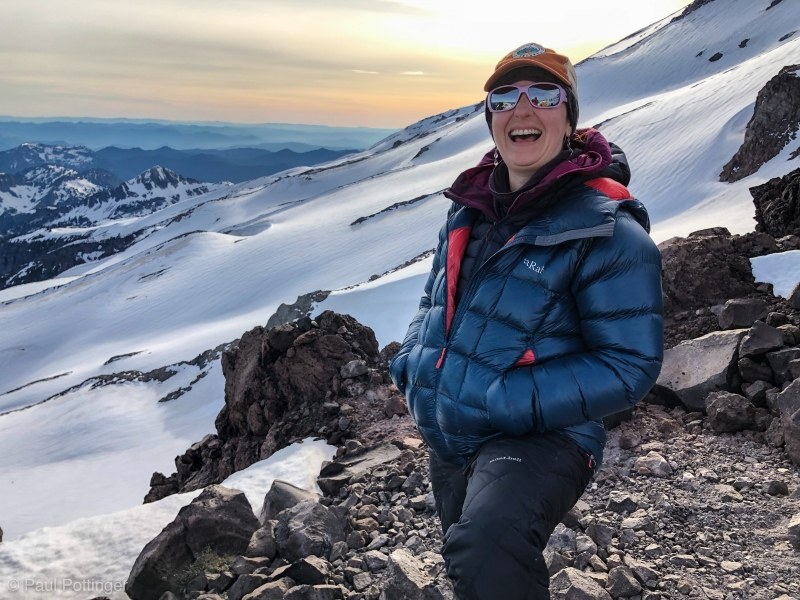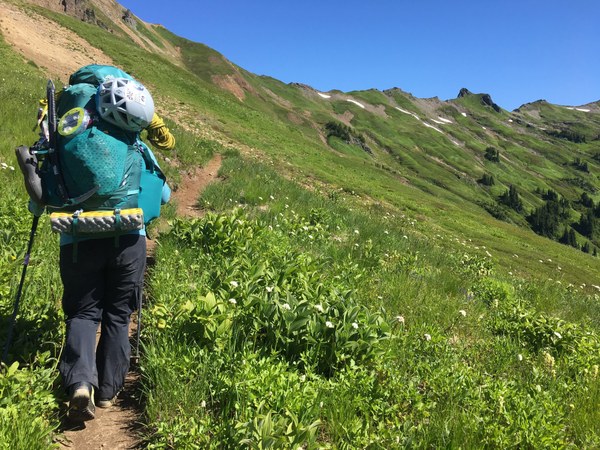
Purchasing outdoor gear can be a daunting experience. I understand. We’ve all been there, standing in the middle of a gear shop, surrounded by dozens of sleeping bags, a pile of backpacks, and enough sleeping pads to stack to the ceiling. It’s all a bit much.
This process can be even more intimidating as a woman. Do we really need women-specific backpacks? What’s the difference anyway? And seriously, what is the deal with the sea of pink and teal?
I started my backpacking experience the same way most people do. My backpack was rented, my sleeping bag was an old-school car camping Coleman special, and my sleeping pad came from Costco. I am certain my first backpacking pack weighed over 50 pounds. The gear worked - mostly - but there was plenty of room for improvement. I did have bacon though!
I have learned a lot in the years that followed, bought and replaced a lot of gear, and can help you cut through the clutter. Let’s talk about the good, the odd, and the options in selecting women’s backpacking gear.
One Size Fits All is a Myth
Let’s start with the basic assumptions gear manufacturers make when designing women-specific gear. Most outdoor gear manufacturers assume that women are shorter, lighter, and shaped differently than men. We are assumed to have narrower shoulders and feet, larger and wider hips, and breasts to fit backpack straps around. Women are also assumed to have higher insulation needs for sleeping bags and pads.
This is obviously not a one-size-fits-all situation. Women come in all shapes, heights, and sizes. The gear that works for one adventurer may be all wrong for the next. We are unique. It’s important to select outdoor gear with this frame of reference.
Women-Specific Gear
Now let’s talk about the design difference in women-specific gear. There are a few key differences to know and consider as you pick the right gear for you.
Backpacks
Women-specific backpacks are commonly designed with a downward-canted hip belt, additional lumbar support, and narrower outwardly curved shoulder straps. They are also built to fit correctly on shorter torso lengths.
This could be great news if your measurements match the girls that Sir Mix-A-Lot prefers. This could be bad news if you are taller, have narrower hips, or simply need a larger capacity backpack. Most women’s backpack options top out at 70 to 80-liter capacities - this may not work if you’re planning a trip to Denali.
Sleeping Bags
It is sad but true that women commonly sleep colder. This means that we need additional insulation in our sleeping bags, particularly in the foot box area. The outdoor gear industry designs for this by increasing or redistributing the insulation in women-specific sleeping bags.
The downside of this extra fluff is extra weight. One popular manufacturer quotes an increase of 4-10 ounces for women-specific sleeping bags. And as we know, every ounce counts.
Do you need that extra insulation? Go get it and sleep like a baby! Don’t need it? Awesome! You may be able to consider a unisex bag or quilt and take weight out of your pack.
Another issue to consider is that many women’s sleeping bags fit individuals up to 5’10” – so even if you are a cold sleeper, if you happen to be tall you may want to opt for a men’s bag with a lower temperature rating. The additional insulation of a women’s bag isn’t going to help much if your head is popping out.
Sleeping Pads
Similar assumptions are made for sleeping pads – women sleep colder. This results in a higher R-Value, or more reflective insulation power, for women-specific sleeping pads. One popular option quotes a 20% insulation increase in their women-specific offering.
The trade-off for this additional insulation is often a heavier or shorter sleeping pad. Pay very close attention to those product specifications. The women-specific example quoted above is a full six inches shorter than the unisex product.
Your sleeping pad is one of your most important pieces of overnight backpacking gear. Assess your needs with care.
Jackets & Shirts
Women often have the distinct pleasure of having a bit extra up front. Sometimes a lot extra. Women-specific jackets and shirts are built to accommodate our unique shape. They are also cut for narrower shoulders and shorter torso lengths.
I own a variety of men’s and women’s jackets. I reach for my women’s fit jackets when I want a tighter fitting low-profile mid or outer layer. I grab my men’s fit jackets when I want a longer and looser fitting layer I can easily stack over multiple layers. My bigger insulation layers are always men’s jackets (and they aren’t pink).
Boots
Finding the right hiking boot can feel like a bit of a Cinderella story. In our story though, there are blisters if you get the wrong slipper. The right boot is worth its weight in gold.
Women’s boots are created with a narrower foot and higher arch design in mind. Look no further if this describes your perfect fit. Leave yourself the option to consider men’s boots if you have larger, wider, or flatter feet.
It is often the case that certain models of shoes are only made in men’s sizes (yeah – it bugs me too). These can still work great with the right insole or thicker socks. I am huge fan of the green Superfeet insoles in my men’s boots.
The right gear is the gear that works, fits, and makes you feel like the empowered outdoor adventurer you are. Select your gear with care and your gear will take care of you.
 Photo courtesy of Teresa Hagerty
Photo courtesy of Teresa Hagerty
Teresa Hagerty is the founder of Cascade Mountain Adventures, Ambassador for PNW Outdoor Women, and a Mountaineers member. Through these communities, she's proud to share outdoor skills with women in the Pacific Northwest.
Add a comment
Log in to add comments."And seriously, what is the deal with the sea of pink and teal?"
Seriously! What's the deal with that? All my gear is either pink or teal.
Wonderful article! I always learn something new from you :)
 Teresa Hagerty
Teresa Hagerty